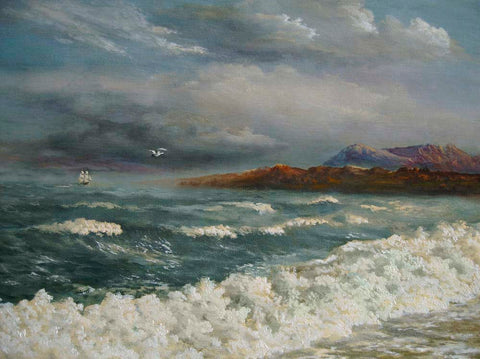 Sometimes called the shipwreck that changed American history, the story of the ill-fated El Cazador begins in New Orleans…
Sometimes called the shipwreck that changed American history, the story of the ill-fated El Cazador begins in New Orleans…In the 1770’s the Spanish controlled Louisiana Territory’s economy was failing, and so Charles III of Spain ordered captain Gabriel de Campos y Pineda to sail the Spanish brig of war, El Cazador (The Hunter), to Veracruz, New Spain (present day Mexico), on 20 October 1783. There she was to be loaded with silver Spanish coins, mostly 8 reales, “Pieces of Eight,” that were to be used to bolster the region’s economy. On 11 January 1784, El Cazador set sail for New Orleans and was never heard from again.
Some historians speculate that had El Cazador made it to New Orleans, and its treasure been able to bolster the economy, Spain might not have given the territory back to France in 1801. And, in turn, the United States would not have been able to acquire it for 15 million dollars in 1803 (60 million francs) from the French. Remember, Napoleon was the Man in France in 1803 (The Napoleonic Wars raged from 1803-15), and the 60 million francs were supposed to be used for the construction of five new canals in France. Instead, Bonaparte spent the whole amount on his planned invasion of the United Kingdom, which, by the way, in case you missed it, was eventually scrapped.
Two hundred years later, about 50 miles south of Louisiana in the Gulf of Mexico, the butterfish trawler, Mistake, was fishing in 300 feet of water when her net snagged something on the bottom. It was 2 August 1993. Captain Jerry Murphy and his crew held their breath as they retrieved the net to examine it for damage. As it was personally related to Robert by one of the salvors in 1994, when they got the net up and dumped the contents on the deck, debris and black clumps fell out. Thinking they were rocks, some of the crew started kicking them through the scuppers and back into the abyss. Then someone yelled “COINS! COINS” and, or course, all fishing stopped.
The coin in this glittering pendant was recovered from the remains of the once proud Spanish galleon, El Cazador. It is doubly rare in that it is a “Pillar Dollar” Reale, rather than the more common Portrait style. While we will never know how history may have been changed if she had made it to New Orleans, we do know that it is a living testament to a time when kings ruled the lands and pirates ruled the seas!
Historical Note from Robert: For over 300 years the Spanish ruled most of the Americas. In the mid-to-late 1700s, wars raged all over the world, many of them for control of the North American territories. The Seven Years’ War (between Great Britain, France and Spain) began in 1754, and was known as the French and Indian War in North America (this is when “Last of the Mohicans” is set). Britain won in 1763, and Spain and Britain divided up a vast area of land which had formerly belonged to France; it ran from the Gulf Coast into Canada. The French called it Upper and Lower Louisiana. The new territory of Spanish Louisiana, then inhabited by approximately 50,000 European settlers, extended from the Gulf of Mexico and the present day state of Louisiana, up to the Canadian border and encompassed over 800,000 square miles. During the American Revolutionary War the Spanish funneled supplies to the American “rebels” through New Orleans and the vast Louisiana territory beyond. The majority of New Orleans’ architecture comes from Spain’s ownership of the city. All of these details and more are included in our multi-page Certificate of Authenticities.
To shop our selection of rare Pillar Dollar El Cazador shipwreck coins here>
